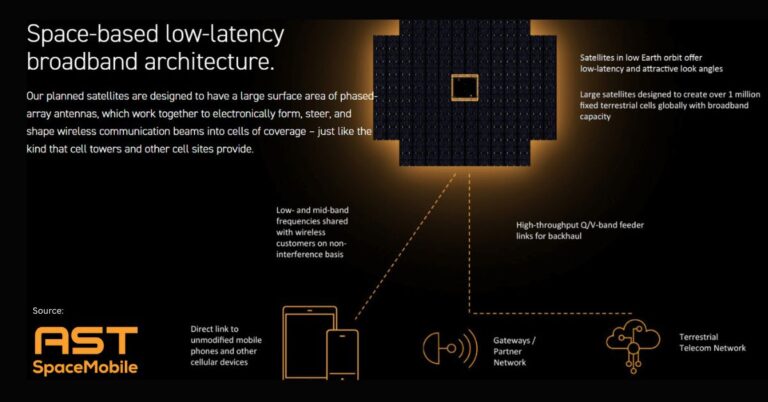Telecom networks stretch across cities, countries, and continents. They carry the data that modern life depends on, and every strand of fiber, switch, and circuit represents real investment. Yet inside these networks lies a hidden problem: assets that continue to consume power, space, and maintenance budgets while remaining absent from both operational and financial records.
This hidden layer is called invisible infrastructure. Unlike documented assets that support services and generate revenue, invisible infrastructure delivers no return. Instead, it drains resources, slows network growth, and complicates compliance with regulators.
For operators already under pressure to cut costs while deploying next-generation networks, invisible infrastructure is more than an annoyance. It is a strategic risk that undermines profitability and competitiveness.
So How Do Networks Lose Sight of Their Own Assets?
Invisible infrastructure does not appear from one major mistake. It builds slowly, the result of small operational gaps that accumulate. Take circuits that outlive their contracts. Business cancels service, billing stops, yet the circuit remains live in the network. It consumes resources long after revenue has ended.
Spare fiber often tells the same story. Extra strands are laid during builds to prepare for demand, but if they are never logged, they vanish from the record. Years later, planners approve new construction, unaware that usable fiber is already in the ground.
Ghost equipment is another culprit. Old shelves stay powered in racks because nobody wants to risk turning them off. The OSS still shows them as active, though they carry no traffic. Power and cooling continue to be wasted.
Even records themselves can betray operators. A system may show a device as full, triggering new procurement. Only when engineers arrive do they find unused ports, unmarked because past disconnects were never updated. By then, new hardware has already been bought.
Why Do Undetected Assets Never Earn Their Keep?
Invisible infrastructure takes many forms. Some are physical, others virtual. All share the same problem: if an operator cannot see an asset, it cannot monetize it. Instead, the asset becomes a silent cost.
Examples include spare fiber strands and ducts absent from records, orphaned routers or switches still running in racks, logical circuits that were provisioned but never tied to a customer, spare parts left in warehouses, and even virtual resources such as licenses or VMs that remain outside inventory tools. The pattern is always the same. Once assets fall out of view, they stop generating revenue but continue to consume capital and operating costs long after their useful life has ended.
The Cost of What Cannot Be Seen
Invisible infrastructure is far from harmless. It quietly eats into revenue and margins across the business. Its impact shows up in several ways:
- Lost income. Orphaned services continue to run without billing. A single case may seem minor, but across hundreds or thousands of circuits the losses add up to millions.
- Stranded capital. Operators build new capacity while existing assets sit idle. Funds that should go into expansion are wasted on duplication.
- Operating costs that stay high. Ghost equipment consumes energy, space, and maintenance contracts. Truck rolls multiply when records cannot be trusted.
- Slow customer delivery. Hidden spare capacity forces operators to design new builds. Customers wait longer, and some switch providers.
- Compliance exposure. Regulators demand accurate coverage reports. Inaccurate data erodes trust and creates financial penalties.
Blind Spots in Operator Records
Invisible infrastructure rarely results from neglect. It usually grows out of structural weaknesses in how networks are managed.
Legacy silos are one cause. Years of incremental investment leave operators with multiple OSS and BSS systems. These rarely communicate well, so assets that do not fit neatly into one system often vanish from consolidated reporting. Mergers and acquisitions compound the problem. Operators inherit different standards and architectures, and reconciliation can take years. During that time, entire sets of assets remain hidden.
Manual processes play their part as well. Field engineers under pressure may delay updates, leaving equipment recorded as active long after it is retired. Financial systems often add another layer of disconnect. Assets may be depreciated on the balance sheet while being invisible in planning tools, creating wasted costs and audit risks.
Vendor diversity creates inconsistency. Different vendors record data differently, contractors add further variation, and without harmonized standards assets slip through.
Why Short-Term Fixes Fail
Most operators have tried to fight this problem. The standard tools are audits, cleanup projects, and reconciliation campaigns. They help, but only briefly.
Audits provide only a snapshot. They correct today’s view but do not prevent tomorrow’s drift. Cleanup projects take months and divert engineers from service delivery. Manual updates lag the pace of the network, and with responsibilities spread across teams, mismatches keep slipping through.
The result is a cycle: discovery, correction, relapses. Invisible infrastructure returns repeatedly because the system is designed to tolerate it.
A Hidden Drain Across Cities and Regions
The shape of invisible infrastructure varies depending on the network, but the financial drain is universal.
In dense cities, the problem comes from speed. Rollouts happen fast, new business districts appear, and records struggle to keep up. Spare capacity is lost in the noise.
In rural or legacy networks, the problem comes from history. Equipment from previous decades still sits in racks. Fiber routes built under old projects are forgotten. Services that should have been decommissioned years ago linger quietly.
Globally, regulators are tightening demands for accurate reporting. In Europe, broadband subsidies require proof of coverage. In North America, government-funded rollouts are tied to audited maps. In Asia, rapid urban development puts constant stress on OSS accuracy. Operators that cannot show where their assets truly are risk more than inefficiency. They risk their reputation with both regulators and customers.
What it Feels Like for Engineers and Planners?
Invisible infrastructure does not only appear on balance sheets. It shapes the daily experience of network teams.
A field engineer arrives to patch a customer connection. The OSS shows no available capacity, so the job includes building new infrastructure. On site, the engineer finds unused fibers. The customer is connected in the end, but only after hours are wasted and unnecessary costs are added.
A planner designs an upgrade because data shows no spare ports at a metro site. Equipment is ordered, installed, and powered. Later, another engineer finds that the supposed “full” device had multiple idle ports. The capital could have been deferred.
Over time, staff lose trust. When they know inventory cannot be relied upon, they begin building their own spreadsheets or relying on memory. Accuracy slips further. The cycle feeds itself.
How VC4 Helps Operators Close the Gap
For many operators, invisible infrastructure has long been accepted as inevitable but VC4 offers a different path.
Its reconciliation engine ensures that changes in the field are reflected in the OSS as part of daily work, not as occasional clean-up projects. With GIS integration, fiber and equipment are mapped in their real-world locations alongside roads and utilities. Service2Create connects every service directly to the assets it uses, so orphaned circuits cannot hide.
VC4’s approach goes beyond fixing data errors, it prevents them from returning. This gives engineers confidence that what they see on screen matches what’s in the field, enables planners to make informed investment decisions, and gives executives assurance that every asset is tied to revenue or released if it’s not.
The impact reaches across the organization:
- Faster service delivery: Spare capacity is visible and ready to use.
- Smarter capital use: Existing assets are maximized before new ones are purchased.
- Lower operating costs: Ghost equipment is deactivated, unnecessary truck rolls are reduced, and energy bills fall.
- More revenue captured: Every active service is linked to billing, closing revenue leaks.
- Stronger regulatory standing: Clean, accurate records strengthen reporting and credibility with authorities.
The Cost of What Cannot Be Seen
Invisible infrastructure quietly drains revenue, wastes capital, and erodes trust in operational data. Traditional fixes fail because they treat symptoms rather than causes. The lasting solution is true visibility: inventory that reconciles daily, maps assets in context, and links every service to the infrastructure it depends on.
VC4’s Service2Create delivers exactly that. By embedding automated reconciliation, GIS integration, and service-to-infrastructure mapping into daily operations, it transforms visibility from a one-time project into a permanent strength. As cities grow and networks expand, operators who maintain full visibility will turn clarity into competitive advantage. Those who allow infrastructure to remain invisible will continue to lose revenue and trust to what they cannot see.
If your team is ready to address invisible infrastructure, explore how VC4’s Service2Create helps operators achieve lasting visibility through daily reconciliation, GIS integration, and service-to-infrastructure mapping. Contact us to learn more or request a walkthrough.








































